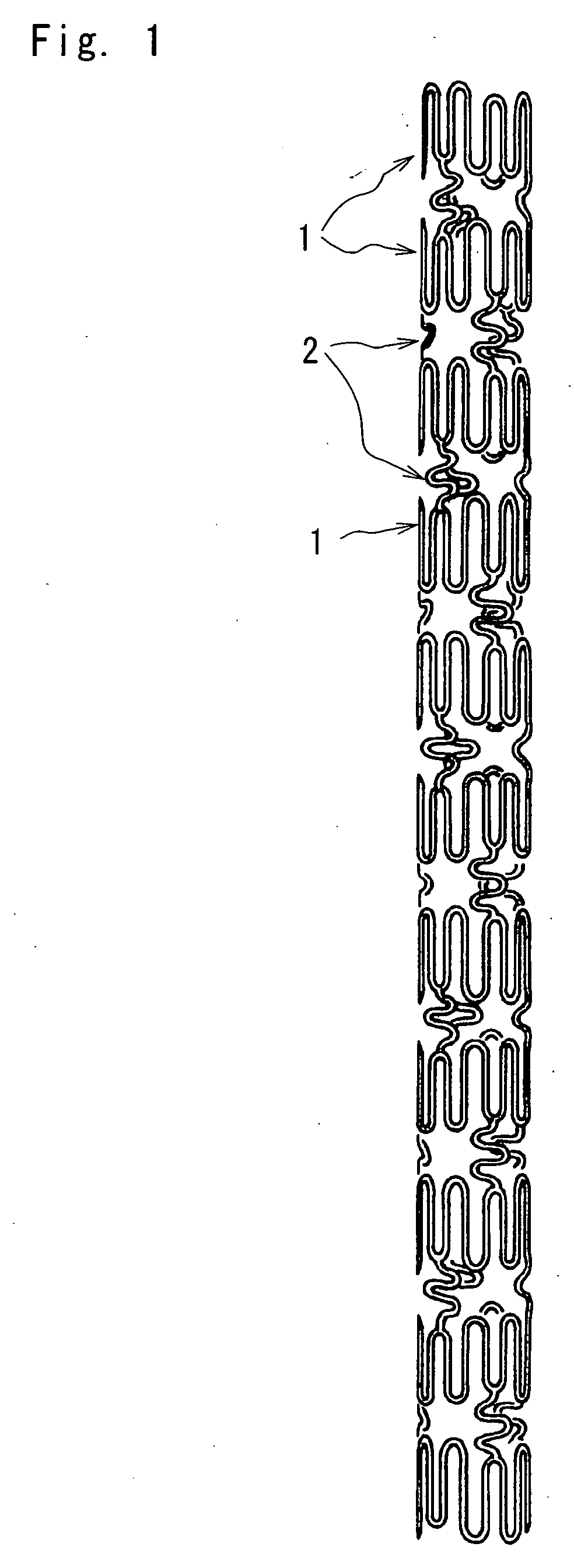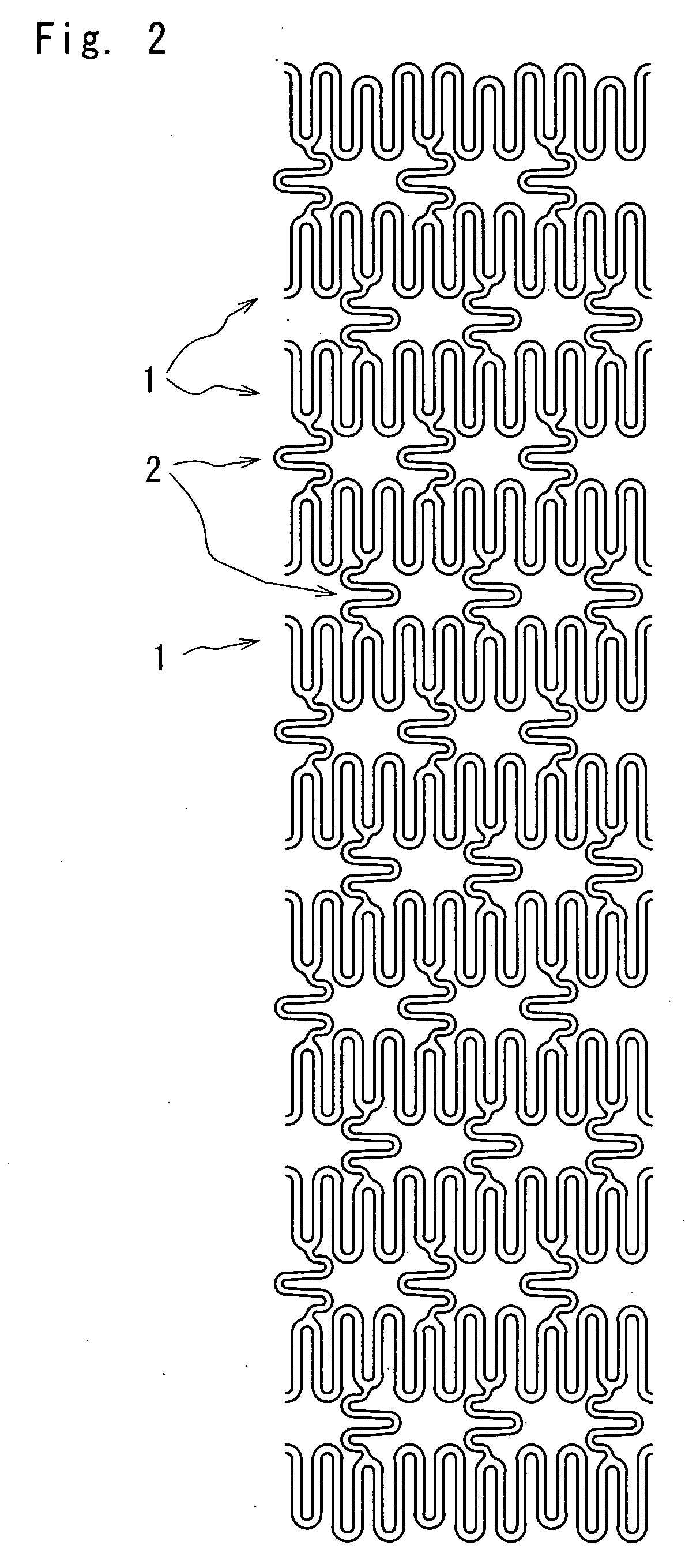Extendable soft stent with excellent follow-up capability to blood vessel
a soft stent and excellent follow-up technology, applied in the field of stents, can solve the problems of obstructing or stenosis of the lumen, difficult to insert the stent into the objective site, and the stents have sufficient flexibility, and achieve excellent trackability to the lumen, easy to form a lateral hole, and flexibility to bend
- Summary
- Abstract
- Description
- Claims
- Application Information
AI Technical Summary
Benefits of technology
Problems solved by technology
Method used
Image
Examples
embodiment 1
Across the Bottom
[0043]FIG. 1 is an enlarged plan view of a stent according to one embodiment of the present invention, FIG. 2 is a development of the stent shown in FIG. 1, FIG. 3 is an enlarged plan view illustrating an expanded state of the stent shown in FIG. 1, and FIG. 4 is a partially enlarged view of FIG. 2.
[0044] As shown in FIGS. 1 to 3, the stent of embodiment 1 is a tubular member comprising eleven annular members 1 arranged in the longitudinal direction of the stent for keeping a body lumen open, and connecting elements 2 arranged by threes between the longitudinally adjoining two annular members 1, 1 to connect them with one another. Each annular member 1 comprises three pieces of first annular member elements 11 and three pieces of second annular member elements 12, which are alternately interconnected in the circumferential direction to define the annular member, which is expandable in the radial direction.
[0045] The first annular member elements 11 and second annu...
embodiment 2
[0050] Embodiment 2 of the present invention will be demonstrated below, making reference to FIG. 6.
[0051] The stent of embodiment 2 is a modification of the stent of embodiment 1, wherein the ratio of distances from the radially halving line to the respective tops of the arched segments is set to 7:8, and the arched segments 125, 114, 3 and arched segments 124, 4, 115 are respectively aligned with one another at the proximal end of the annular member 5 on the proximal side of the stent or at the distal end of the annular member 6 on the distal side of the stent, and the connecting elements 2 are formed into a shape shown in FIG. 5E. As illustrated in FIG. 6, the stent comprises six annular members 1a-1f, which are radially expandable, and the adjoining two annular members 1 are connected to each other by three wavelike connecting elements 2 as shown in FIG. 5E.
[0052] The arched segments of the annular members situated at each end of the stent are respectively aligned along the pr...
embodiment 3
[0055] Embodiment 3 of the present invention will be demonstrated below, making reference to FIG. 7.
[0056] The stent of embodiment 3 is a modification of the stent of embodiment 1, in which the connecting elements 2 are formed into a shape as shown in FIG. 5D. As shown in FIG. 7, the stent comprises ten annular members 1 which are radially expandable and arranged in the direction of the longitudinal axis of the stent, the adjoining annular members 1, 1 are connected to each other by three wavelike connecting elements 2 shown in FIG. 5D. The aforementioned stent is excellent in trackability to lumens since the whole stent is flexible enough to respond to bending. Further, it is easy to provide the stent with a lateral hole. In addition, the tops of the arched elements are prevented from producing curvature deformation when expanding the stent and minimized in curvature deformation which may occur at the time of bending of the stent, thus making it possible to avoid any damage of the...
PUM
 Login to View More
Login to View More Abstract
Description
Claims
Application Information
 Login to View More
Login to View More - R&D
- Intellectual Property
- Life Sciences
- Materials
- Tech Scout
- Unparalleled Data Quality
- Higher Quality Content
- 60% Fewer Hallucinations
Browse by: Latest US Patents, China's latest patents, Technical Efficacy Thesaurus, Application Domain, Technology Topic, Popular Technical Reports.
© 2025 PatSnap. All rights reserved.Legal|Privacy policy|Modern Slavery Act Transparency Statement|Sitemap|About US| Contact US: help@patsnap.com



